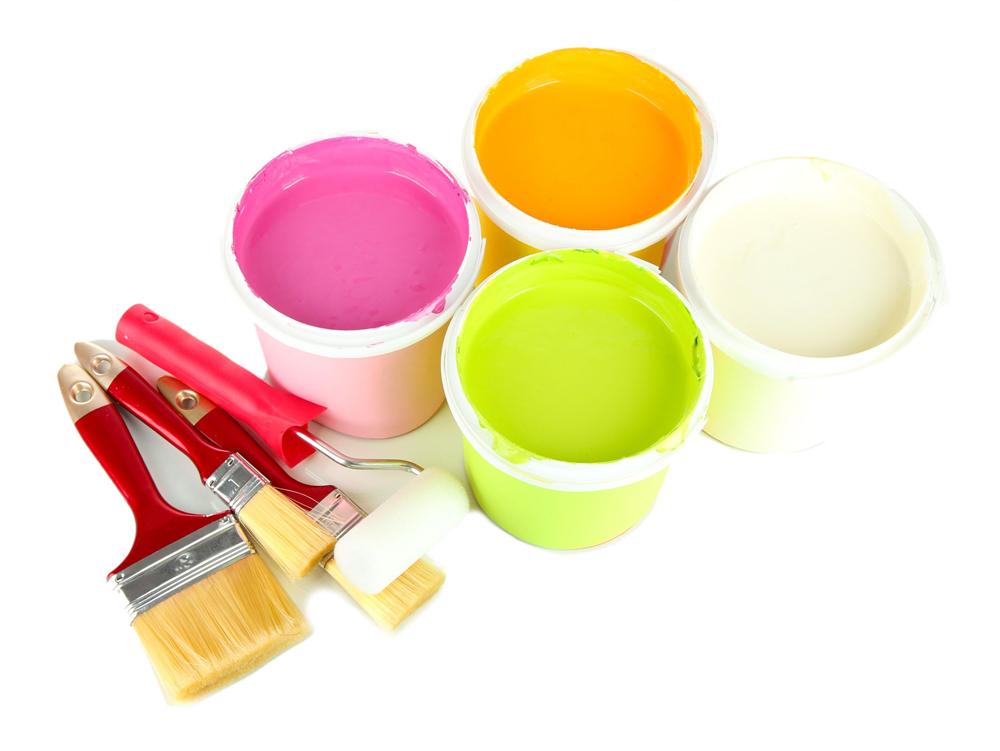Cardinal Rules For Painting
Here's a few time tested tips to make painting your home easier while helping you avoid common pitfalls, plus you'll get a perfect paint job that will last you for years to come!
You've decided to paint your home, but did you know thatpainting a room is not just about choosing a color? To the contrary picking acolor is probably the simplest thing on your list for now. Here's a fewtime tested tips to make painting your home easier while helping you avoidcommon pitfalls, plus you'll get a perfect paint job that will last you foryears to come.
Advantage Paint

Gloss vs matte, what's the advantage?
When the label on a paint says matte or gloss it's not justfor the visual effect of the paint. In fact the type of finish should be takeninto consideration for its advantages and pitfalls too. Glossy paints areextremely easy to clean and repair but can highlight imperfections, while mattepaint will hide imperfections in the wall but is easily damaged. Glossy paintis a good choice in high traffic areas like corridors or children's roomsbecause hand prints and scribbles can be easily cleaned off.
Sample It

Always buy a small sample of paint
Paint manufacturers now offer a sample sized can fordifferent colors and paint finishes. This is a great way to try out a colorwithout depending on a stamp sized swatch out of a color card. You'll be ableto see the color on the wall in the exact setting of the room it's meant forand this will help you get the color right in the first try.
Cost = Area + Process

The cost of painting depends on many factors
The amount of paint, labour and time required is as muchabout the size of the room to be painted as the finish you decide to paint, howintense you want the final effect to be, the texture of the wall, etc. Allthese aspects will determine the cost of the paint job. For example, texturedwalls will consume more paint than smooth finished ones, while different paintfinishes will consume more time as they are labour intensive.
Prep Is Paramount

Repair cracks in walls before painting begins
Prep your home before the paint job begins to prevent damagecaused by paint spatter and the process of painting itself. Do check out ourpost The painting prep list- Before you start to get yougoing in the right direction. Also, ensure that the painting crew preps thewalls to be painted adequately by brushing them clean and repairing cracksetc., to ensure a fabulous final result.
Color Clash

A stirrer is used to mix a batch of paint
The custom mixed paint that you adore may come from amachine linked up to a hi-tech computer but different batches can still varyslightly. If you run short or are using batches bought at different times, mixall of the paint into one large batch before you let the paint crew apply it tothe walls to prevent two different shades of paint on one wall!
Primer Points

Apply the right primer
Painting the walls with the correct primer meant for thepaint finish you decide on is important because it helps the paint to adhere tothe surface of the wall and ensures an accurate finish when done. Primerprovides a good quality, even finish in the final result because it seals thewall and makes a smooth base for the paint.
Brushstroke Begone

Use a roller to prevent visible brushstrokes
Equipment Management

Painting equipment should be neatly stored and clean
Paint brushes used for a dark red paint being reused toapply pristine white is a recipe for disaster. You may contaminate the entirecan of white paint with a brush that is not cleaned properly post applying aruby red gloss. Insist that the paint crew set-up a staging area and thatequipment is cleaned or discarded as required.
Leftovers

Save leftover paint in individually labelled, sealedboxes
Save leftover paint for future touch-ups. It'll save youmany a trip to the paint shop in the future for when a chip or patch needsrepairing. Plus, the color you chose may be discontinued, leaving you high anddry when you need a little extra paint. Put leftover paint in a small labelledcontainer and seal with a piece of cling wrap, before shutting the can, to makean airtight seal that prevents paint from congealing.
These simple tips will give you minimum painting relatedpain so you can enjoy the new look of your home stress free. Happy painting!